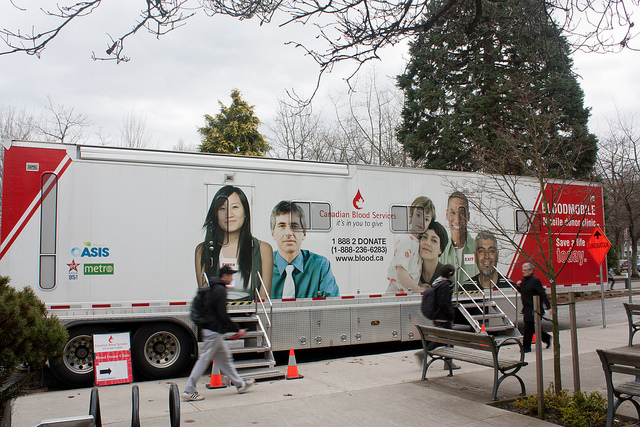In 2012, it was discovered that a for-profit company had applied to the Canadian government for permission to start paying people for their blood. A year later, in 2013, it became widely reported that several for-profit plasma collection clinics were set up in downtown Toronto and Hamilton. The clinics were owned by Canadian Plasma Resources and had all but opened their doors to the public (chairs were in, machines set up, signs were on the door).
This news didn’t sit well with many people, the Council of Canadians included, and we demanded the federal government hold broad consultations with the public and civil society organizations. The government set up one in-camera session with a very small and select group of stakeholders. Fortunately our friends at Canadian Doctors for Medicare (CDM) managed to get an invite to the consultation session and asked important questions, like, is there a need for additional plasma collection in Canada? Where will this plasma go and what will it be used for? What impact will paid plasma collection have on the voluntary blood supply?
Since then, we have discovered that additional plasma may not be required. Right now Canada obtains its plasma two ways. First, it uses the voluntary blood supply. Second, it purchases plasma from the international market. Just before the application by Canadian Plasma Resources was first made to the federal government, Canadian Blood Services closed their donation facility in North Bay citing “decline in demand for plasma requires decrease in collections.” So, why if there is decreased demand for plasma and too much plasma already, is Canadian Plasma Resources arguing that we need to pay people for their plasma?
Canadian Plasma Resources has been telling people that by paying for blood donations they are securing more plasma for Canadians. But Canadian Plasma Resources blood will be sold on the international market and to the highest bidder. It’s unlikely to stay in Canada and with our current trade agreements if there ever was a shortage of plasma we would be forced to sell it to the highest bidder that we have a trade agreement with. However, if we keep blood collection voluntary, we’re able to shore up our own resources.
Also of concern is that these clinics were to be set up next to drug rehabilitation centres, homeless shelters, and university campuses. These are places where many people face challenging financial circumstances and therefore may feel more compelled to sell their blood. Concerns have also been expressed about blood collection in populations more at risk of contracting blood-borne pathogens.
Lastly, we discovered that there hasn’t been any research conducted on what the introduction of for-profit plasma collection will mean to our voluntary blood supply. This is perhaps the most worrisome. Voluntary blood donation is a symbol of Canadians’ desires to help one another in a time of need. A voluntary blood donation clinic is also the best way to ensure a safe blood supply according to the World Health Organization and Canada’s Krever Inquiry.
So what does this have to do with the Ontario elections? In March 2014, the Ontario government tabled Bill 178, the Voluntary Blood Donations Act. The bill was passed by all parties in the House but referred to a standing committee on April 14, 2014. Then the election was called. This meant the bill died on the order and was not brought into legislation.
Although all parties supported the bill earlier this year there is no guarantee that any of the parties will bring forward new legislation banning for-profit plasma clinics should they win the election on June 12. After calls and emails to the Liberals, NDP, and PC parties, not one of the parties were able to comment on their plans to ensure our blood supply remain as safe as possible by being kept voluntary.
Ontarians should be asking anyone coming to their door seeking their vote for their party’s stance on for-profit plasma clinics. A 100 per cent voluntary donation system for blood should be the goal for Canada, not the introduction of profit-seeking corporations selling Canadian’s blood on an international market, having possible consequences for our current donation system.
Photo: Phillip Jeffrey/flickr




